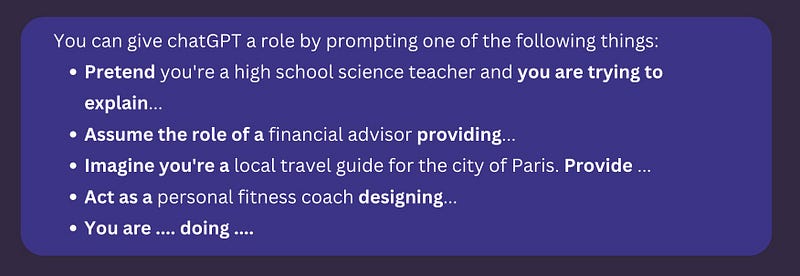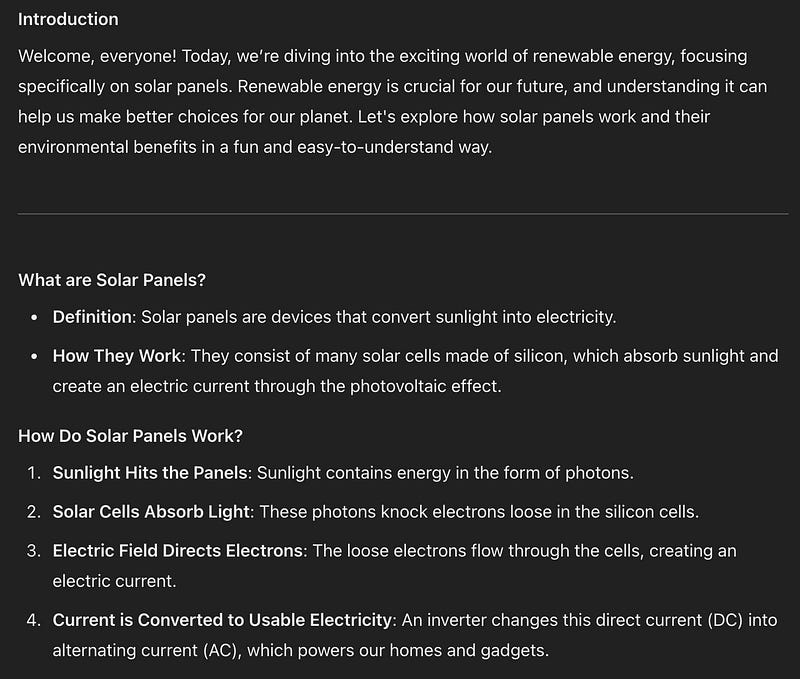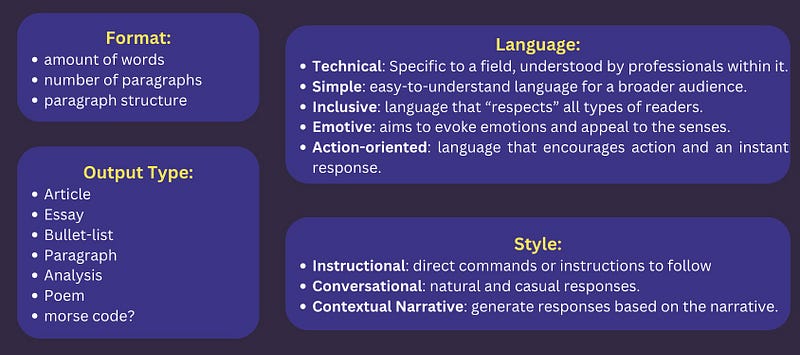Unlocking the Power of ChatGPT: Insights from 1000+ Hours of Use
Written on
Chapter 1: Introduction to ChatGPT
My journey with ChatGPT began when it became publicly available in November 2022. Instead of delving into mundane details, I want to highlight how this remarkable tool has revolutionized my workflow. I aim to share my strategies for maximizing ChatGPT's capabilities and outline my efficient working process.
Crafting Effective Prompts
For the past year, I've been on a quest to identify the ultimate prompt. However, I've realized that the perfect prompt doesn't exist. A more effective approach involves understanding prompt mechanics, which allows for rapid crafting of prompts in mere seconds.
Prompt Structure Explained

In a prompt, the role defines the character you assign to ChatGPT, establishing its expertise level. The task outlines what you want it to do, while context provides additional information that can guide its response. TSL (Text, Style, Format) determines how the output appears.
A comprehensive prompt could look like this: "You are a mathematics professor. Develop a basic outline for a PowerPoint presentation on the first lesson of Calculus 1, focusing on connecting concepts from pre-calculus in a simple, engaging manner. The presentation should be interesting to capture students' attention and consist of bullet points for each of the 15 slides."
Breaking Down Prompt Components
Role
The role can vary widely—from a copywriter to a historical figure, or even a fictional character like a cat or a computer. Assigning roles helps ChatGPT associate the task with specific expertise, enhancing the quality of its output.

For instance, to write compelling website copy, you might assign the role of a professional copywriter.
Task
The task specifies what you want ChatGPT to accomplish. It could be anything from writing an email to coding or summarizing information.
Context
Context narrows down the general information ChatGPT utilizes, yielding a more detailed and relevant response. For example, specifying, "I'm preparing a presentation for high school students about renewable energy solutions, focusing on solar panels," gives ChatGPT a clearer direction.

Without context, the output might lack focus, leading to a less effective response.
Types of Context
There are various types of context to consider:
- Problem-Solving Context
- User Preferences Context
- Target Audience Context
Incorporating context helps streamline the content, ensuring the response aligns with your expectations.
TSL (Text, Style, Format)
TSL encompasses how the final output is structured. For example, you might instruct ChatGPT to create a video script about technological evolution, specifying that it should consist of nine short paragraphs, each representing a decade, with engaging yet professional language.

However, it’s important to remember that the best results don’t come from the ideal prompt alone.
The Real Secret: Feedback Loop
The key to getting the most out of ChatGPT lies in the feedback process. Regardless of how meticulously crafted your initial prompt is, the output may not meet your expectations right away. Providing immediate feedback on what needs adjustment is crucial. After several iterations, you can refine the output to your satisfaction.
Steps to Optimize Your Output
- Craft the Initial Prompt: Keep it simple and focus on the four essential components: Role, Task, Context, and TSL.
- Iterate: Run the prompt multiple times to gather different outputs.
- Refine: Combine aspects from various outputs into a cohesive final product, adjusting as needed based on your preferences.
Utilizing Custom Instructions
A powerful yet underutilized feature of ChatGPT is custom instructions, found in the profile settings under "Customize ChatGPT." This allows you to set up guidelines that can enhance the quality of responses for specific tasks.
Simple Instructions
Custom instructions can be as straightforward as indicating a dietary restriction.
Complex Custom Instructions
For more advanced tasks, you can create detailed instructions that outline roles, responsibilities, and desired outputs.
Conclusion
In summary, optimizing your workflow with ChatGPT doesn't involve crafting a perfect prompt. Instead, it relies on a combination of effective prompting, continuous feedback, and utilizing features like custom instructions. With over 1000 hours of experience, you now have the tools to become proficient in leveraging ChatGPT for your needs!
Explore the "1000 Hour Rule of Thumb for Learning" to understand how dedicated practice can enhance your skills.
Watch "I Tried Making $1,000 Using ChatGPT (7 Days)" to see practical applications of ChatGPT in action.